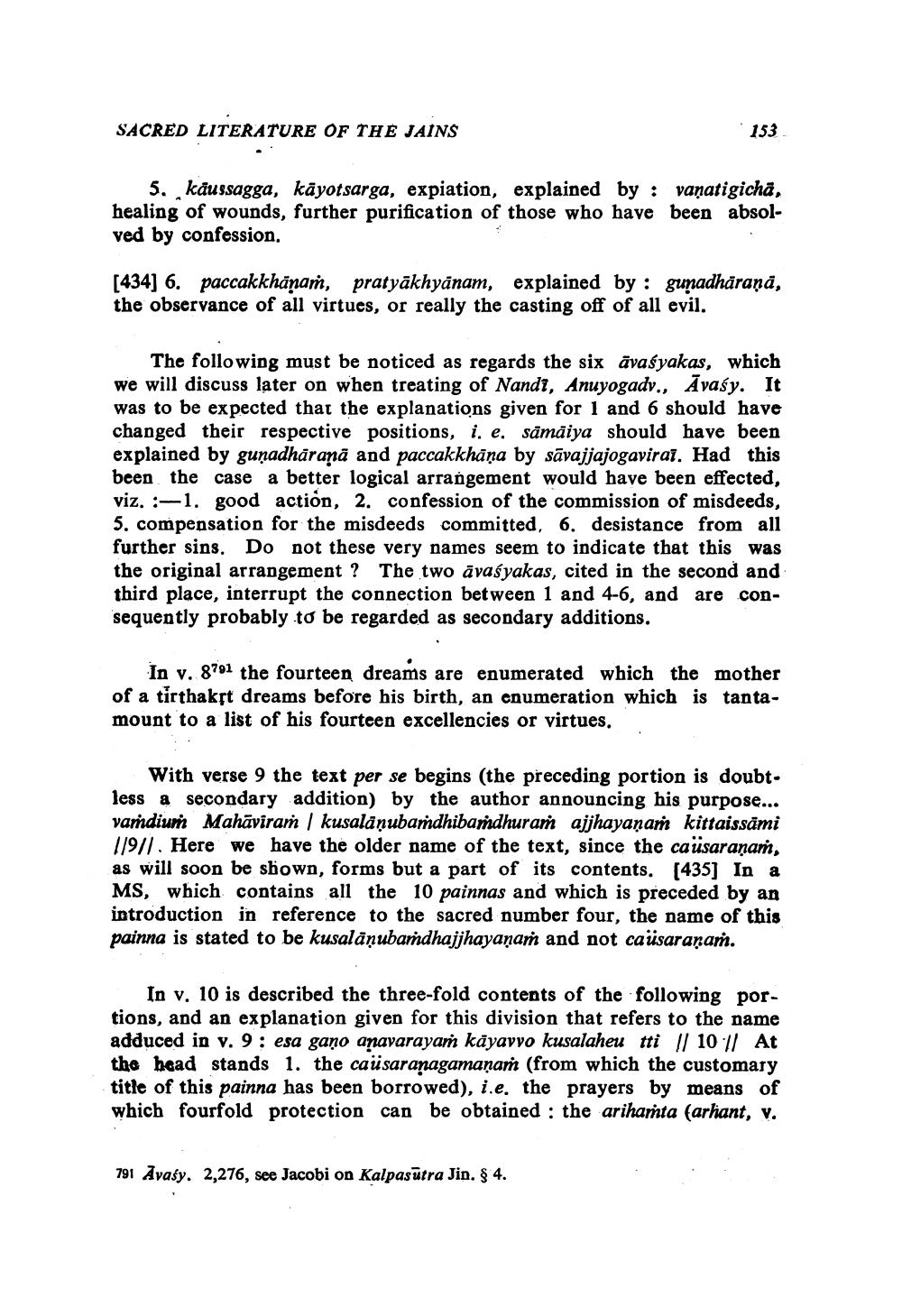________________
SACRED LITERATURE OF THE JAINS
153
vanatigicha,
5. kaussagga, kāyotsarga, expiation, explained by healing of wounds, further purification of those who have been absolved by confession.
[434] 6. paccakkhāṇaṁ, pratyākhyānam, explained by: guṇadhāraṇā, the observance of all virtues, or really the casting off of all evil.
The following must be noticed as regards the six avasyakas, which we will discuss later on when treating of Nandi, Anuyogadv., Avasy. It was to be expected that the explanations given for 1 and 6 should have changed their respective positions, i. e. sāmaiya should have been explained by guṇadhāraṇā and paccakkhāṇa by savajjajogavirai. Had this been the case a better logical arrangement would have been effected, viz. -1. good action, 2. confession of the commission of misdeeds, 5. compensation for the misdeeds committed, 6. desistance from all further sins. Do not these very names seem to indicate that this was the original arrangement? The two avasyakas, cited in the second and third place, interrupt the connection between 1 and 4-6, and are consequently probably to be regarded as secondary additions.
In v. 8791 the fourteen dreams are enumerated which the mother of a tirthakrt dreams before his birth, an enumeration which is tantamount to a list of his fourteen excellencies or virtues.
With verse 9 the text per se begins (the preceding portion is doubtless a secondary addition) by the author announcing his purpose... vamdium Mahaviraṁ | kusalāṇubamdhibaṁdhuram ajjhayanam kittaissāmi 1/9/1. Here we have the older name of the text, since the causaraṇam, as will soon be shown, forms but a part of its contents. [435] In a MS, which contains all the 10 painnas and which is preceded by an introduction in reference to the sacred number four, the name of this painna is stated to be kusalāṇubamdhajjhayaṇaṁ and not causaraṇaṁ.
In v. 10 is described the three-fold contents of the following portions, and an explanation given for this division that refers to the name adduced in v. 9: esa gano anavarayam kayavvo kusalaheu tti || 10 || At the head stands 1. the causaranagamanam (from which the customary title of this painna has been borrowed), i.e. the prayers by means of which fourfold protection can be obtained: the arihamta (arhant, v.
791 Avasy. 2,276, see Jacobi on Kalpasūtra Jin. § 4.




